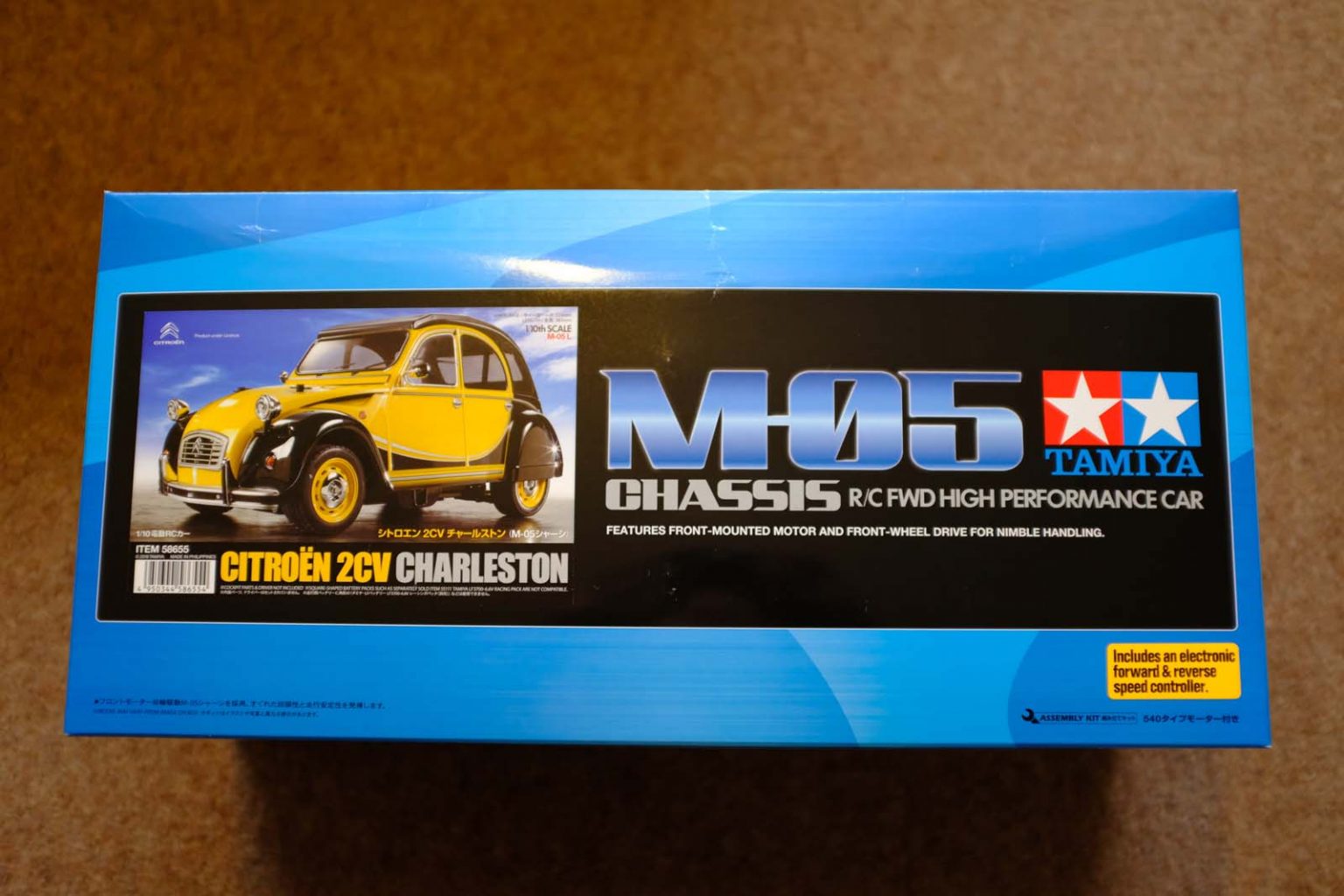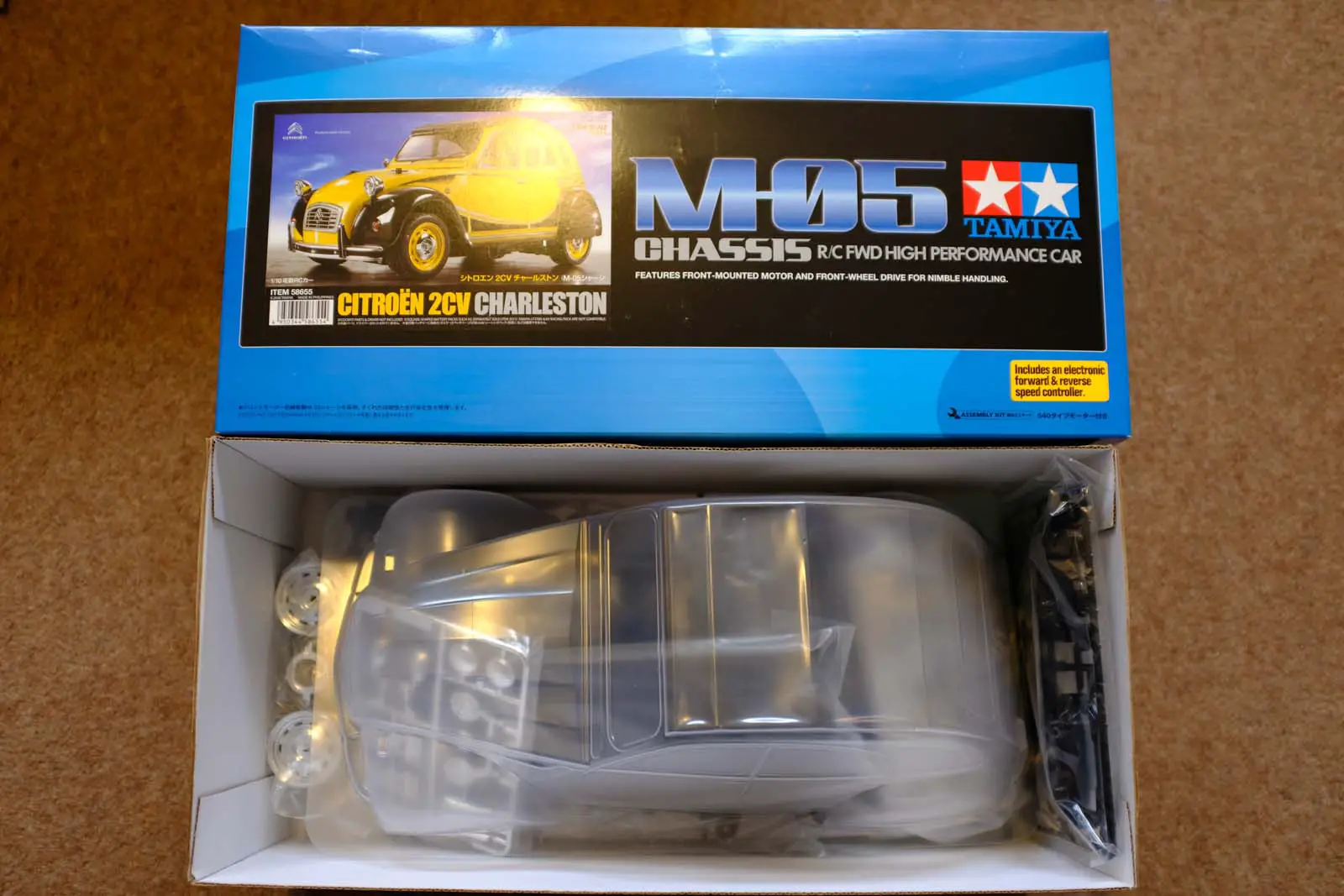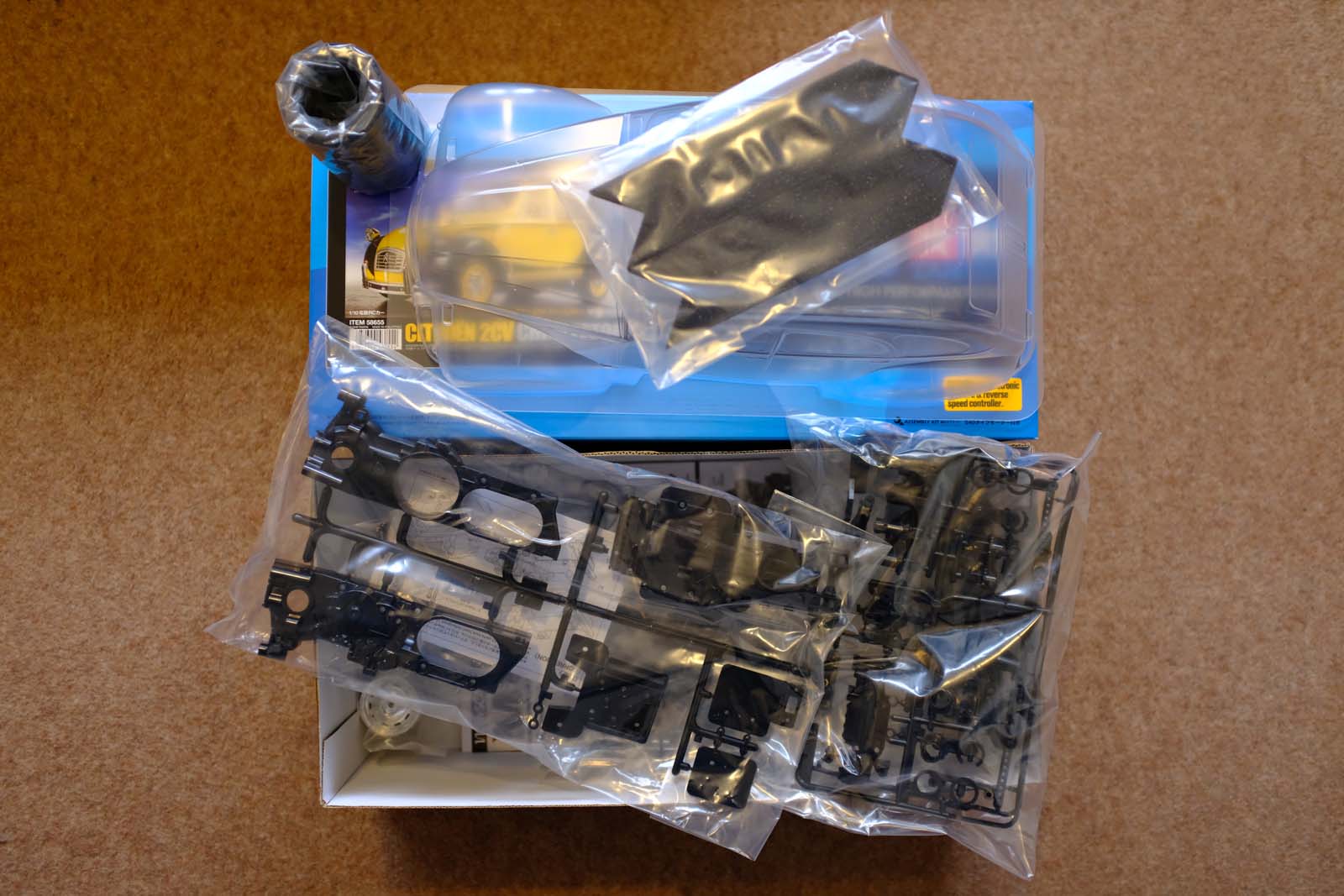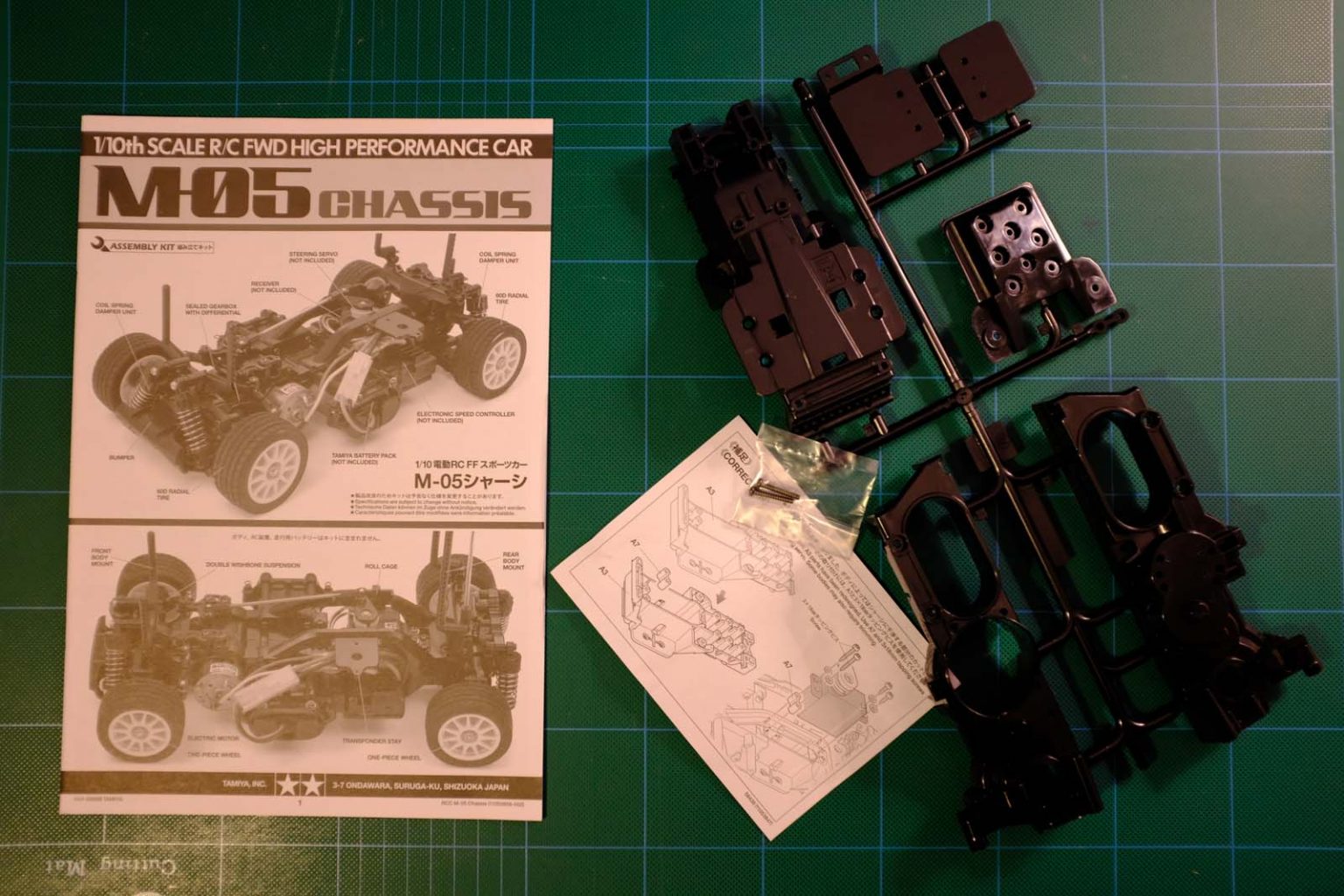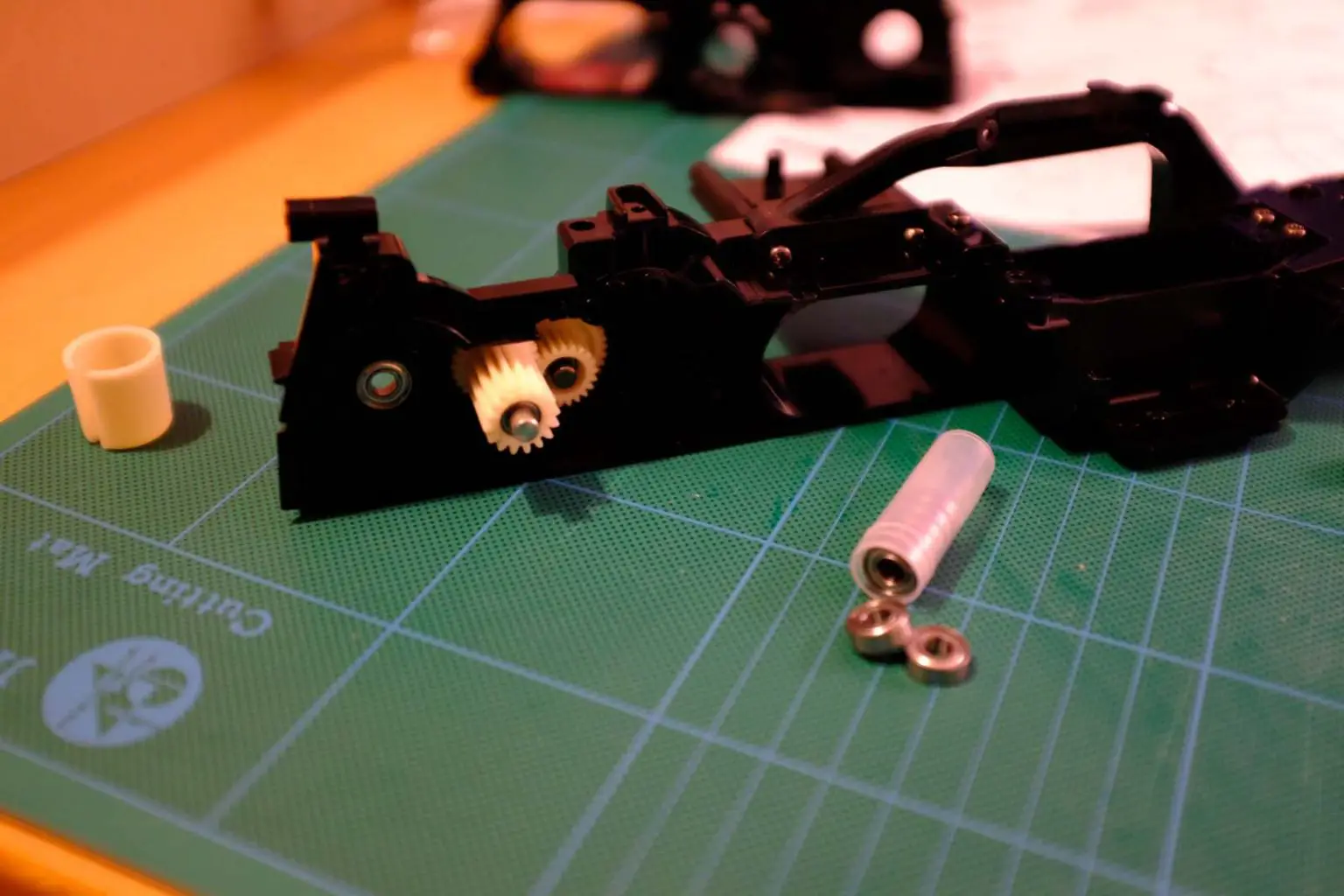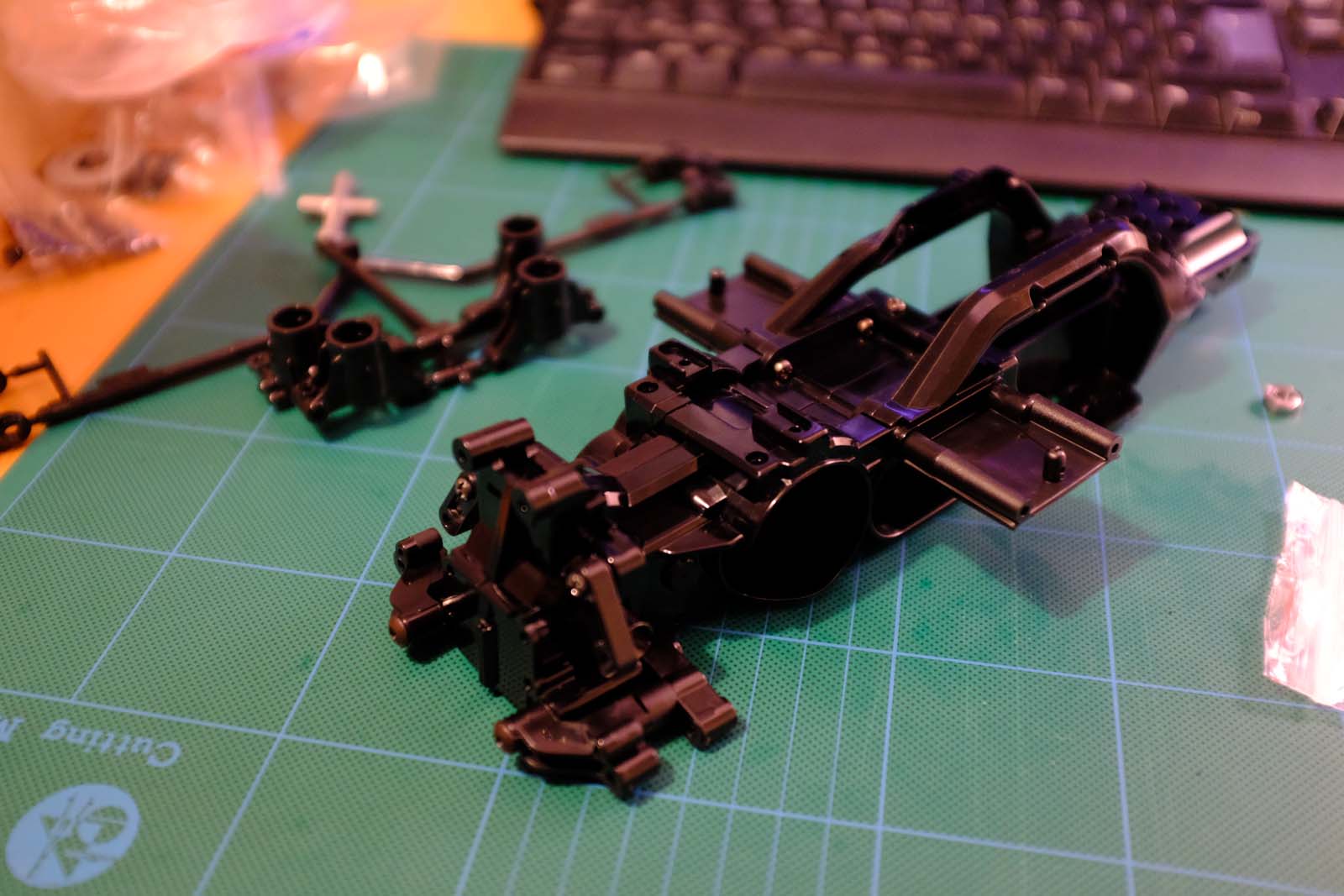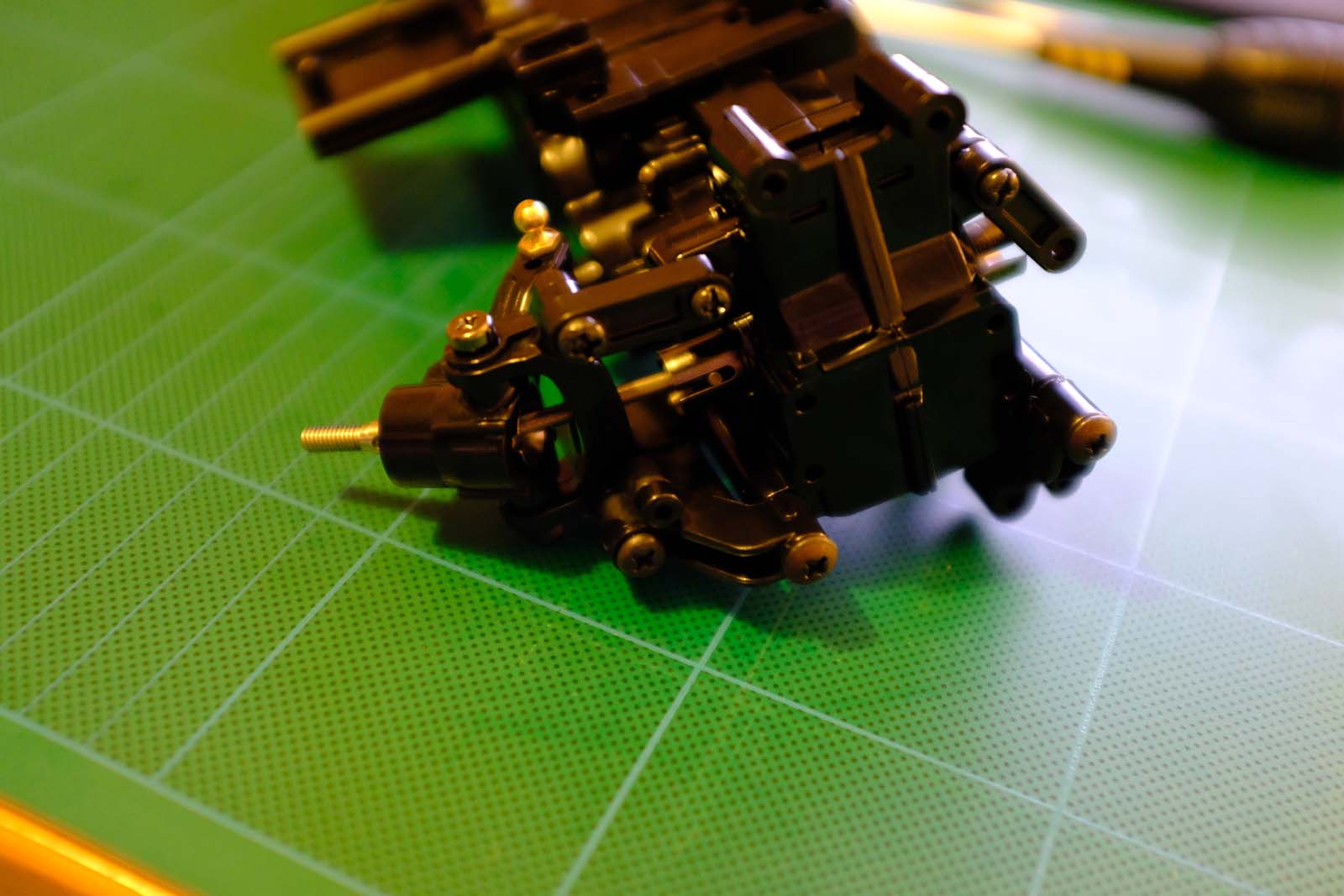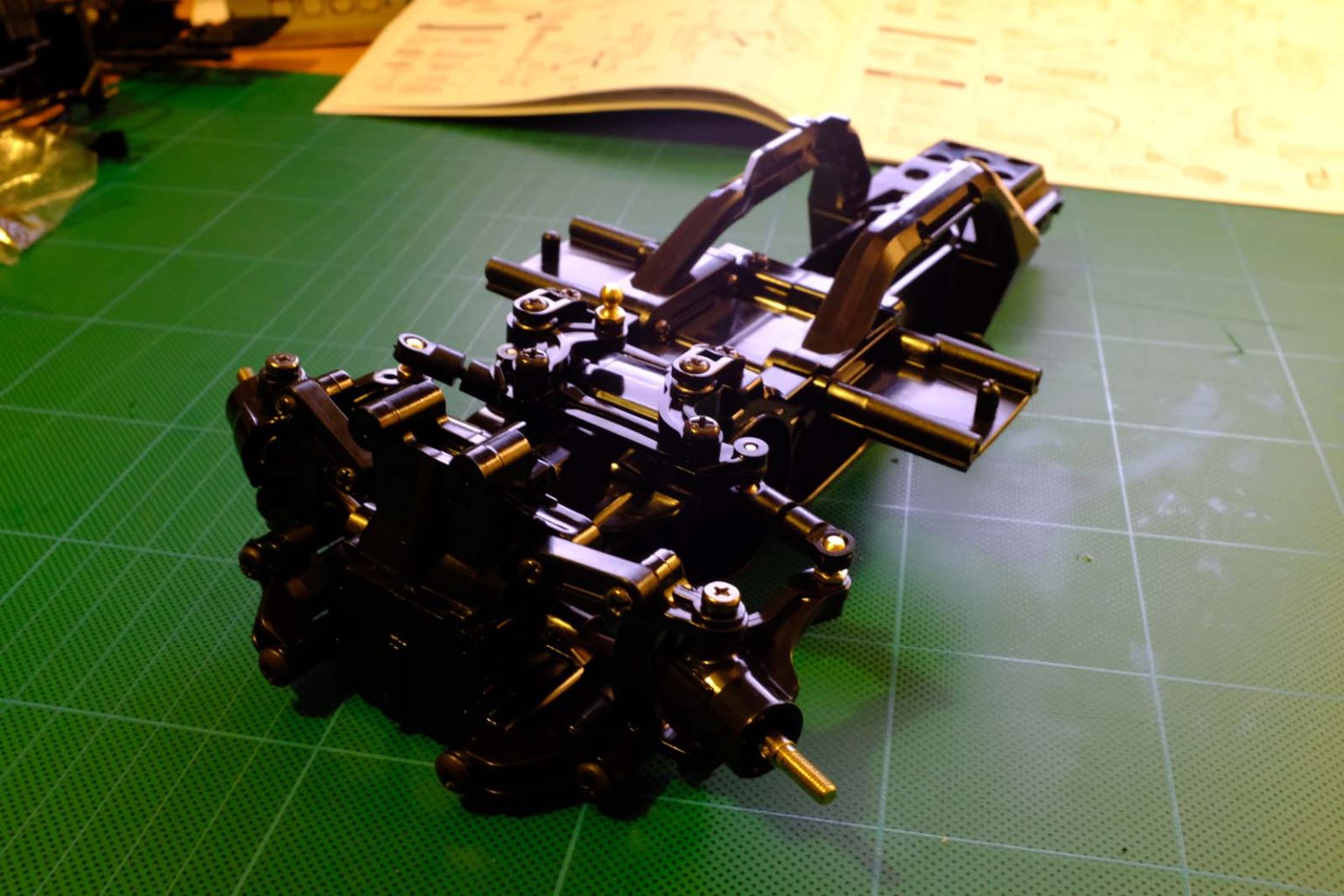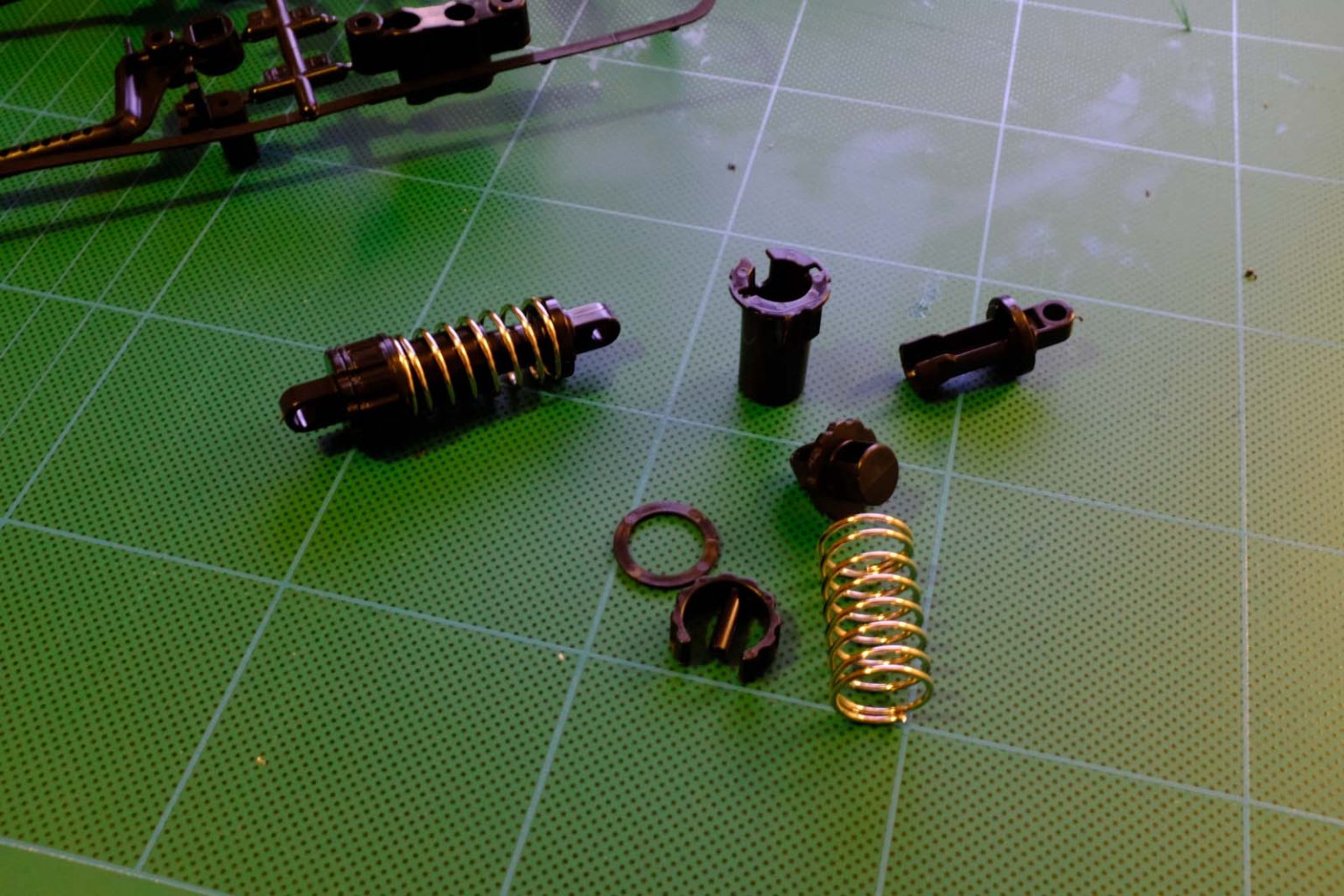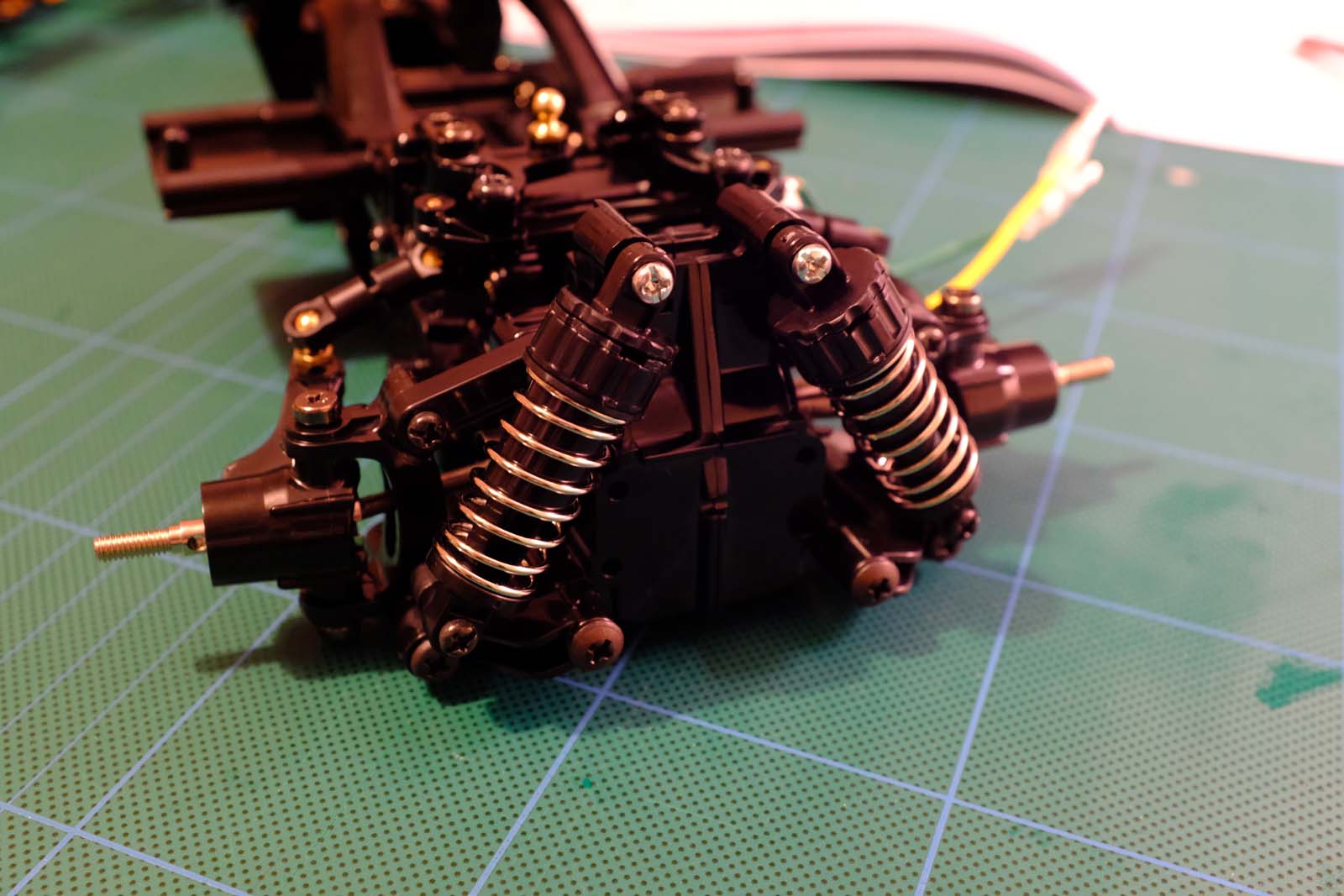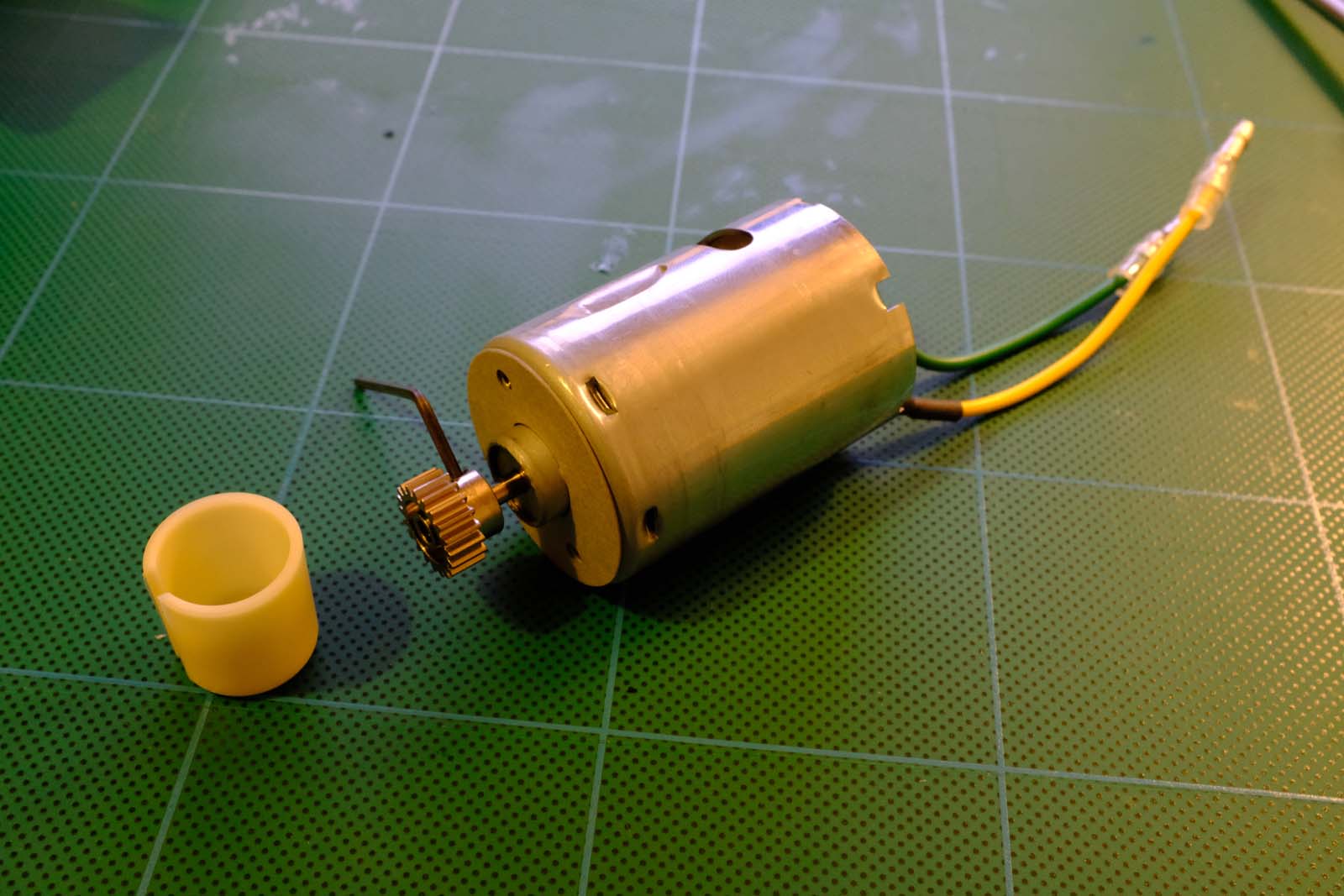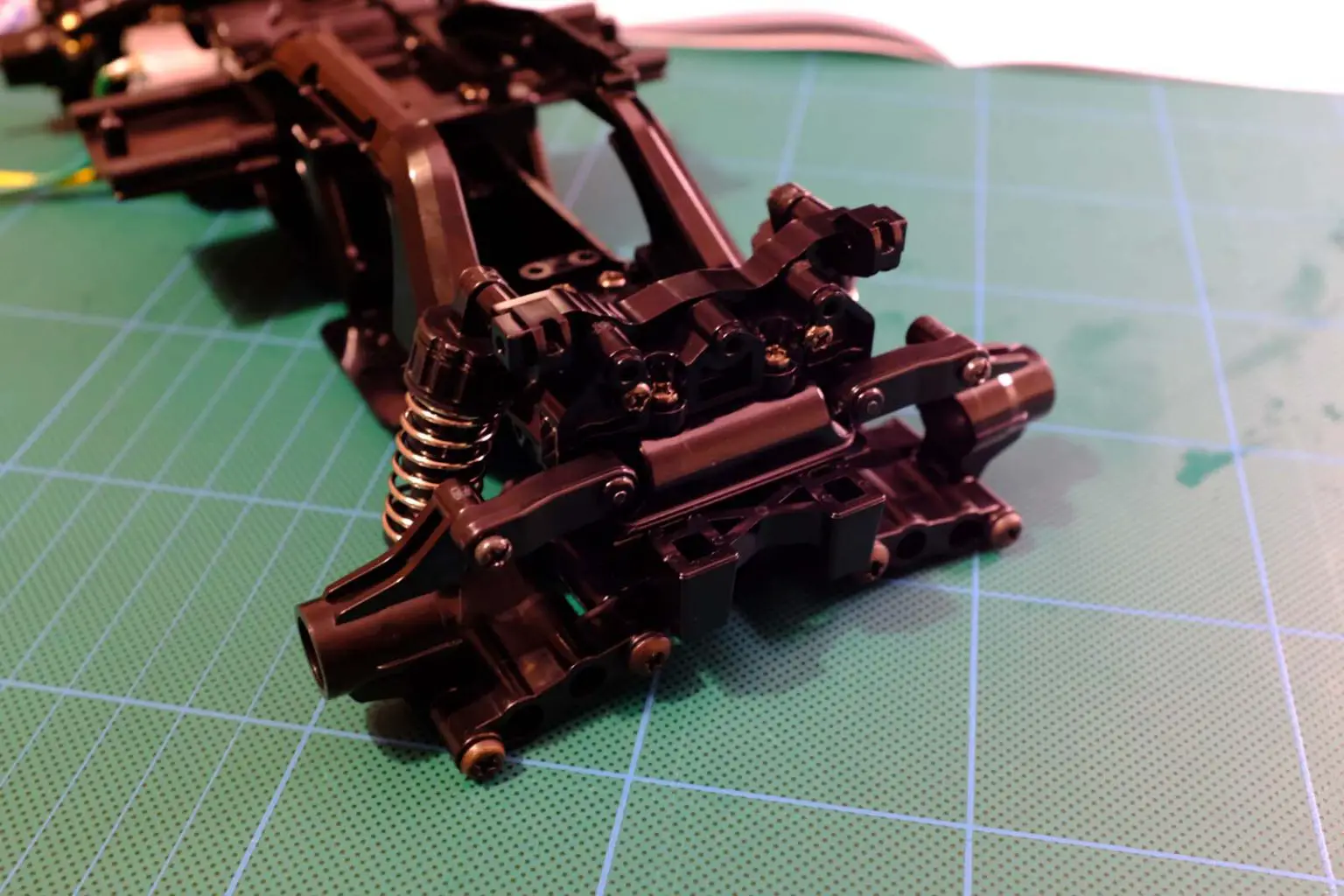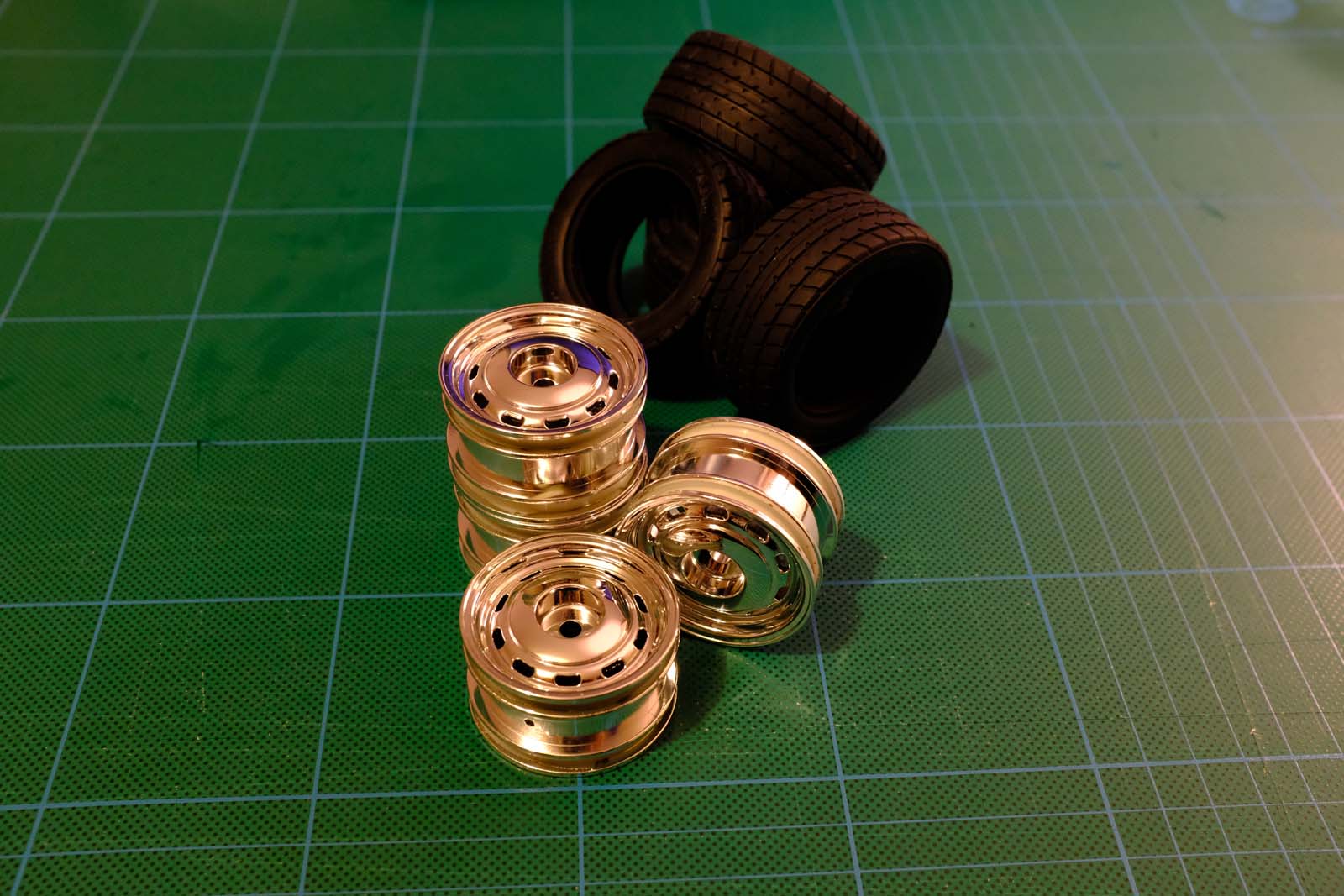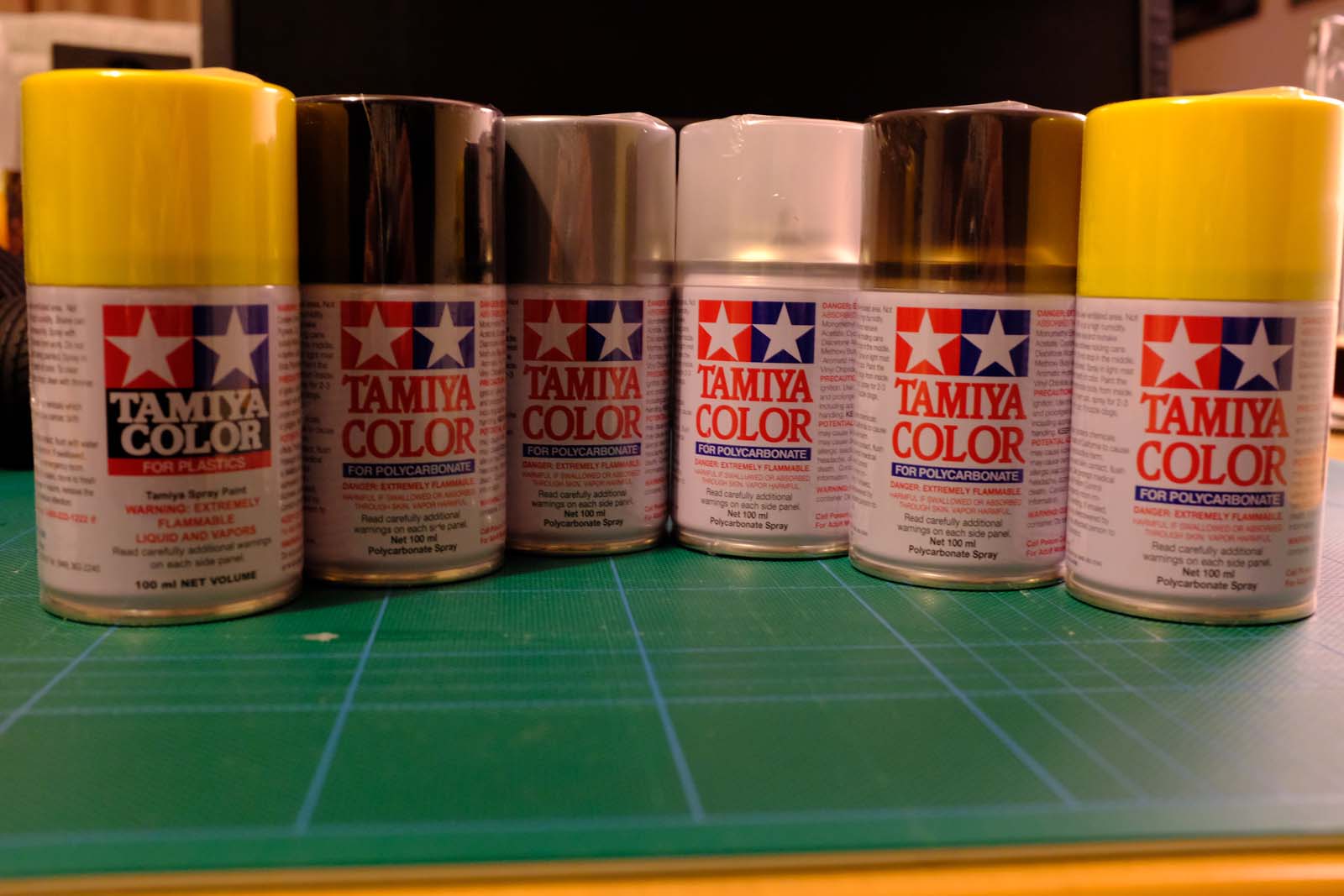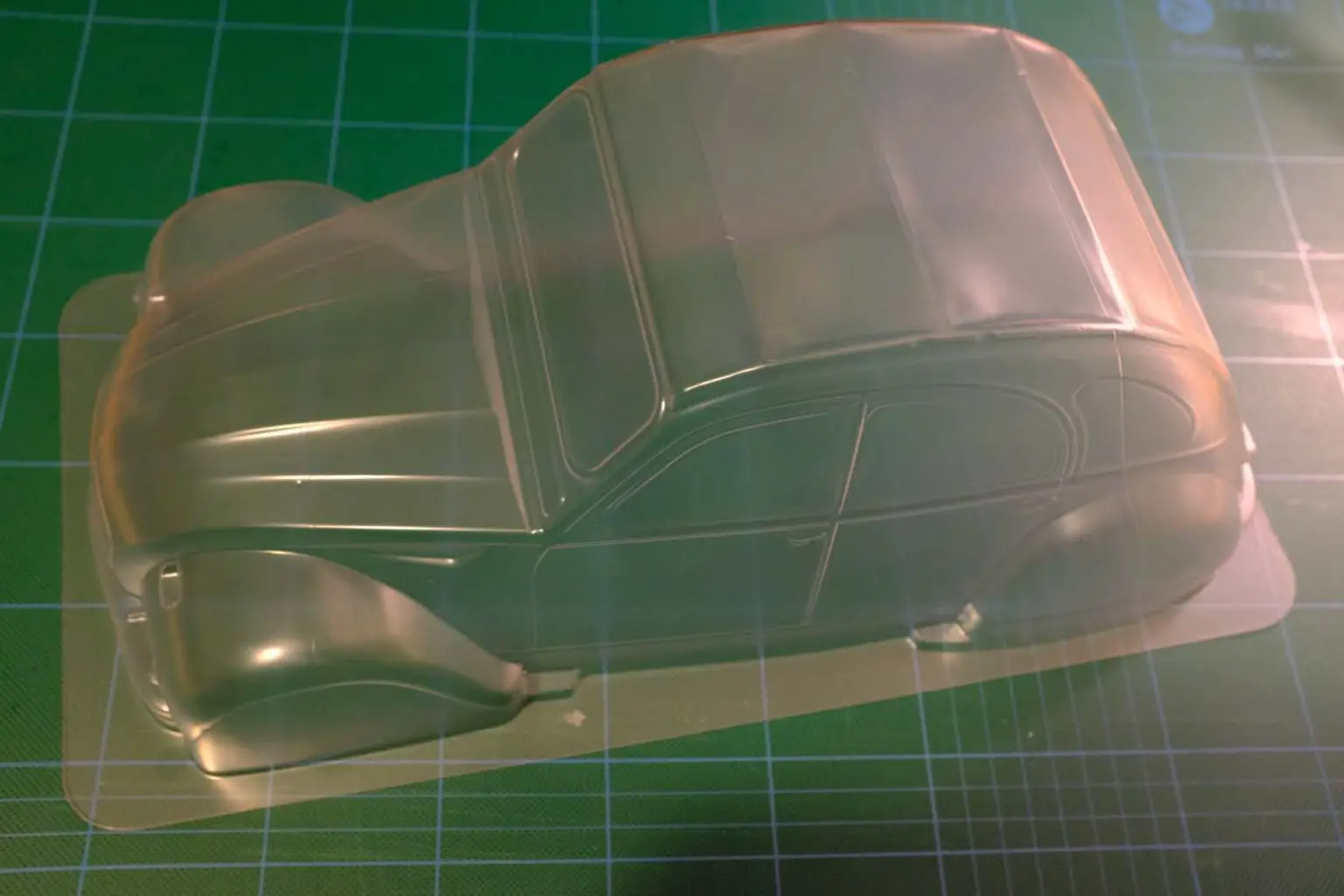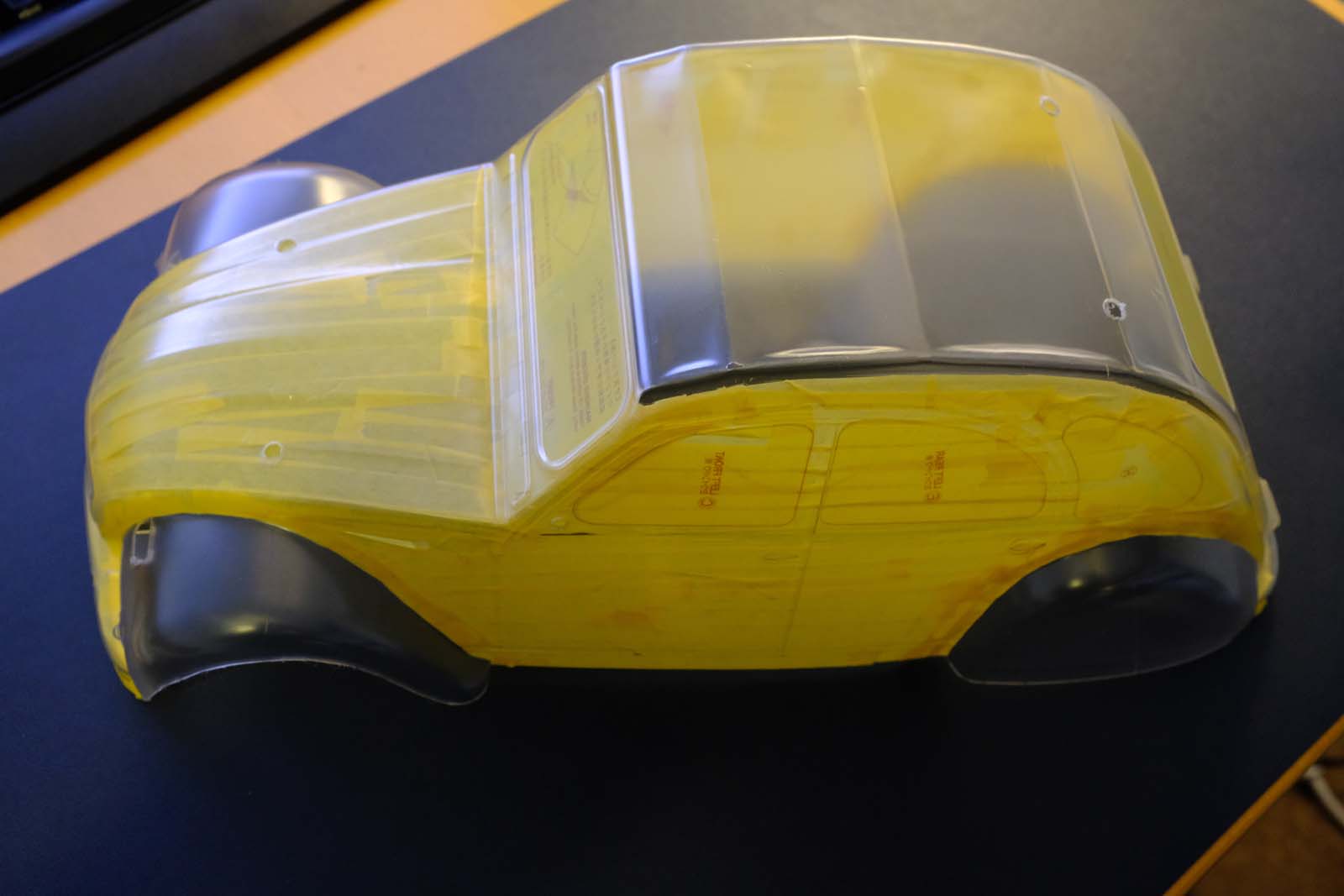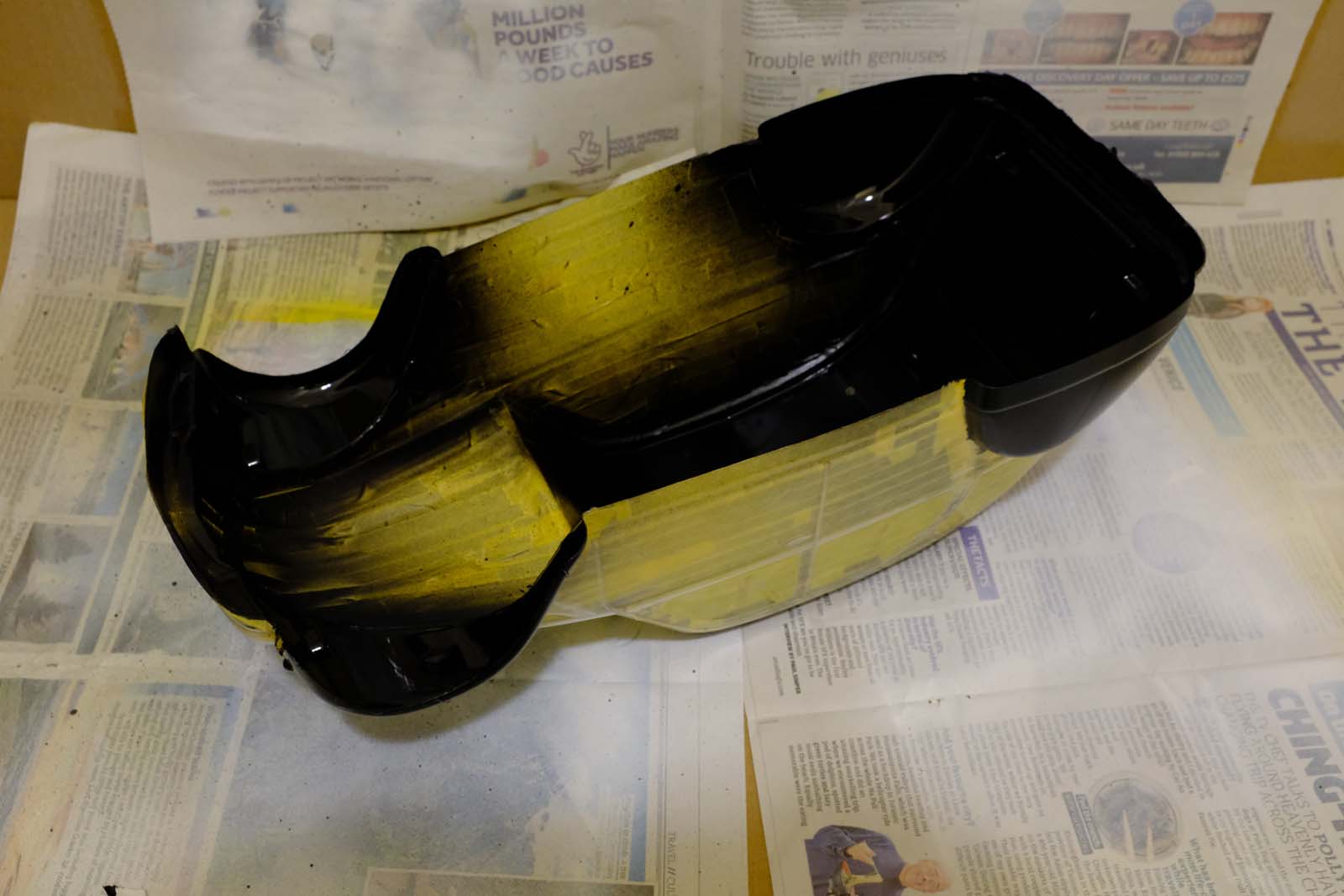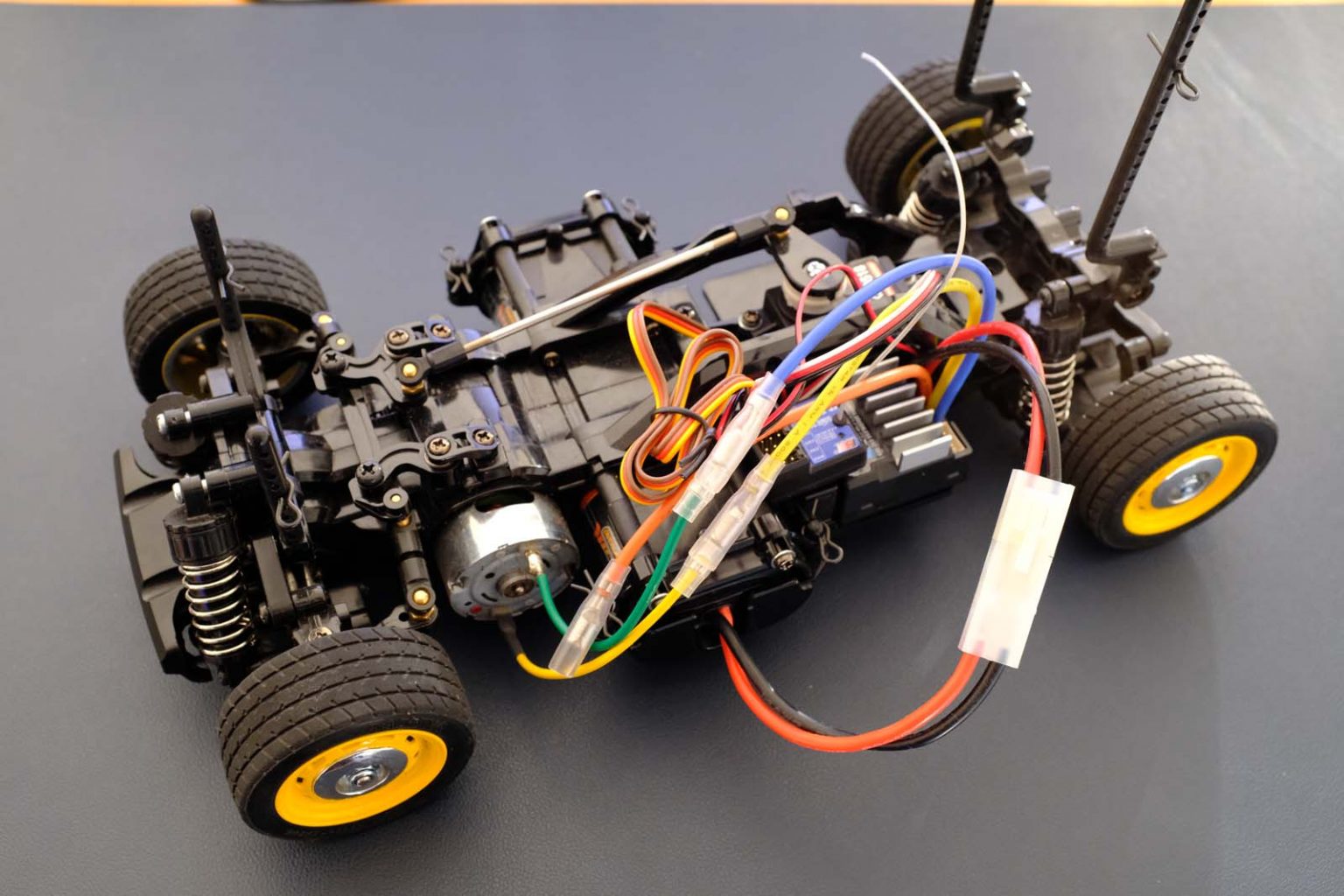
Ok, Jalopy sort of buys a new car, an RC Tamiya Citroen 2CV. New Year new car perhaps. It seemed like a good idea at the time and still does. This thing is great.
What is it? Well, if you’re not familiar with the world of radio control cars then I think you should be. You can get your classic fix in a variety of shapes and scales. From 1/36 to 1/4 if you need to, but here with Tamiya we have 1/10. This can sometimes be described as true ten, as this more accurately represents the cars proportions. A typical 1/10 scale buggy is far too wide and a car like the 2CV which is inherently narrow would look rather comical if built to fit that.
The Tamiya 2CV is based on their M-05 chassis, a front wheel drive on road car. Yes, that’s correct FWD. Tamiya have been doing this for close to twenty years or so and know what they are doing. They are model makers by profession, so the level of detail in their kits is high. Plenty of additional bits to fit and the quality of the bodyshells is impressive.
The 2CV is a longer wheelbase than some of the other offerings, but the good news is you can build three different wheelbases. The original Mini has the 210mm wheelbase and is hilarious fun, if a little twitchy. The mid length is 225mm and the long is 239, so quite a difference. This will tame the handling a little, some say that the midpoint offers the best compromise. Best buy some more kits and find out, but first I really should get on with building this one.





